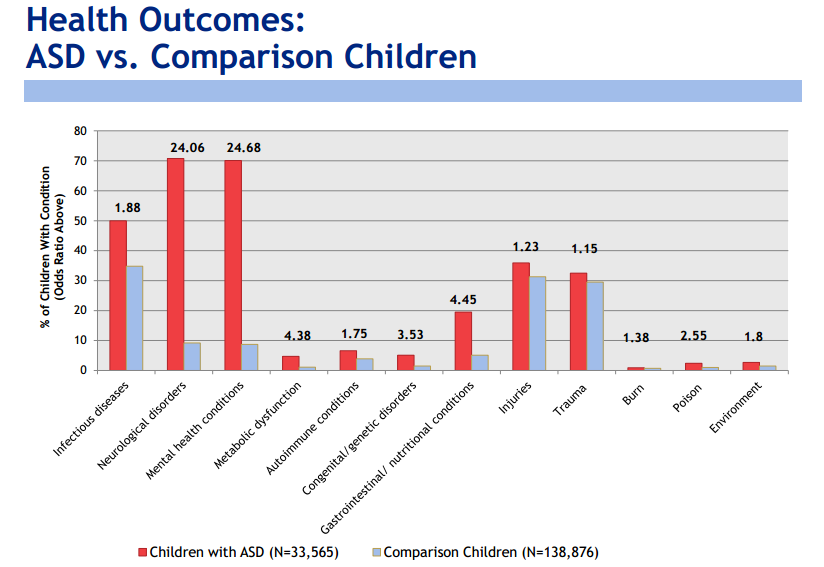With the recent outbreak of measles in California (and spreading elsewhere), we are seeing a lot of new coverage of vaccine related questions. We are also seeing a number of vaccine antagonistic individuals and groups showing that they are, well, antagonistic towards vaccines. There is no surprise that much of the antagonism towards vaccines is coming from a segment of the autism parent community. Besides being highly irresponsible in general, these groups are putting our own communities at risk. In an outbreak people with developmental disabilities are at heightened risk of becoming infected. Autistic children are nearly twice as likely to see a doctor for an infectious disease visit than a non autistic child. (click to enlarge) And multiple studies have shown an increased risk of complications or death from infectious diseases. In a recent influenza outbreak, the CDC reported on the deaths in people with underlying medical conditions. This was discussed here at Left Brain/Right Brain as Children with neurologic disorders at high risk of death from flu. From the CDC press release: Of the 336 children (defined as people younger than 18 years) with information available on underlying medical conditions who were reported to have died from 2009 H1N1 flu-associated causes, 227 had one or more underlying health conditions. One hundred forty-six children (64 percent) had a neurologic disorder such as cerebral palsy, intellectual disability, or epilepsy. Of the children with neurologic disorders for whom information on vaccination status was available, only 21 (23 percent) had received the seasonal influenza vaccine and 2 (3 percent) were fully vaccinated for 2009 H1N1. Another CDC study, and again discussed here, Severe Influenza Among Children and Young Adults with Neurologic and Neurodevelopmental Conditions — Ohio, 2011. In one facility with 130 residents total 76 residents had acute onset of respiratory illness. 13 were severely ill. 10 were hospitalized, and 7 died. 7 out of 130 dead in one outbreak. Here’s a 1988 study, Causes of death of patients in an institution for the developmentally disabled. Respiratory disease, predominantly pneumonia and aspiration, accounted for 72% of deaths Pneumonia is relatively common following diseases including measles and influenza. A study from 1996 Large sequential outbreaks caused by influenza A (H3N2) and B viruses in an institution for the mentally handicapped tells us that residents of the facility were about twice as likely to get sick (59% became ill) as staff. Residents were about 5 times as likely to be sickened twice as were staff. These are just a few studies I’ve collected. Not a thorough search at all. But the point is clear: the developmentally disabled are more likely to be sickened and more likely to be injured or killed by disease. What is the infection rate and the rate of injury or death from other infectious diseases, say measles, in the developmentally disabled population? We are lucky enough in the U.S. to not have those data. But if we take the approach proposed by those who are opposed to vaccination, we may find out soon. — By Matt Carey
This content was originally published here.
